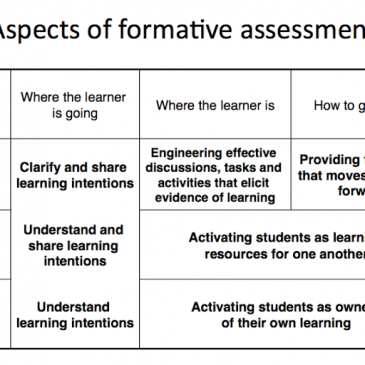I research performance assessment rubrics, criteria and technology that in my research focus have all been developed in the arts. Performance assessment features such as “authenticity” of the test, rubrics with detailed “criteria for judging the assessment” and purposes for assessment that include “students demonstrating what they know and can do” can also be found as assessment features embedded in driver’s education tests, airplane pilot tests, medical physician tests and teacher preparation tests. The specific role of performance assessments is usually as a final test, combined with some type of standardized paper and pencil test, to see and measure and ultimately to confirm what students know and can do.
Authenticity
One of the more valued features of performance assessments is their authenticity in assessing what students know and can do. For example, when you take a drivers education test, the paper and pencil component will tell you how well the student has reviewed and memorized the drivers education booklet. However, the paper and pencil test alone will not predict accurately whether the student can drive the car successfully. In order to get a more authentic assessment of their driving ability, a performance assessment is needed, where the student drives the car in real time with a real instructor/assessor onboard. The authenticity of this part of the exam to get one’s drivers license is highly valued in today’s society.
Assessing What Students Know and Can Do
The paper and pencil test is also highly valued for confirming that the student has read the rules of the road and knows the law of driving. But without the drivers Ed performance assessment, we would not know whether the student could drive safely in real-life situations. Assessing the student’s knowledge of the written material through one type of test and assessing the student’s ability to drive the car through another type of test—with a performance assessment—is why we assess what students, “know and can do.”
A Rubric for Confirming the Goals of Learning and the Learning that was Attained
Performance assessments naturally enhance the teaching and learning process by using a rubric to precisely confirm what is required to pass the tests. Rubrics come in many different sizes and shapes but most of them include several categories or levels of achievement that are crossed in a table with several valued skill sets of the domain. For example:
Rubric for writing the Reading Responses
| Name: | Uncritical | Considered | Competent | Insightful |
| Purpose and Audience; Your goal is to help another reader evaluate the readings in light of school improvement. | Limited awareness of purpose reveals a novice approach to the topic | Attempt to establish purpose and communicate to audience | Focused on Purpose and evidence of voice and tone | Maintains clear focus and distinctive voice and tone |
| Organization and references your personal point of view and your ability to write in an academically persuasive format using rhetoric and APA to marshal evidence in support of your ideas in response to the readings. | Paper lacks organization | Paper is organized but doesn’t make sense; few references | Paper’s organization helps to create understanding through use of references | Paper’s organization is brilliant and references support reader’s understanding |
| Knowledge of School Improvement and Reform | Paper lacks knowledge of reform | Paper shows some familiarity with reform | Paper uses reform knowledge to make it’s case | Paper’s reform knowledge illuminates and persuades reader |
| Understanding; your analysis & understanding of how this reading is useful | The paper shows little understanding by the student | The paper shows some beginning understandings by the student | The paper has merit and student demonstrates understanding of ideas used | The paper shows depth and complexity of understanding through analysis |
| Overall Assessment | 1 point | 2 points | 3 points | 4 points |
Comments:
Formative and Summative Assessment
Many tests are given at the end of the course and these are called summative tests. Performance assessments can be given at the beginning, middle and end. When they are given at the beginning or middle, they become formative assessments. The advantage to formative assessment is that the results can be used to change teaching and learning right away!
A More Accurate Measure of Learning
Performance assessments are a more accurate measure of what has been taught and what has been learned and should be used, or embedded, all along the course of learning. I would like to see our work in performance assessment be highlighted in journals and used as platforms in legislation for education in the nation.




